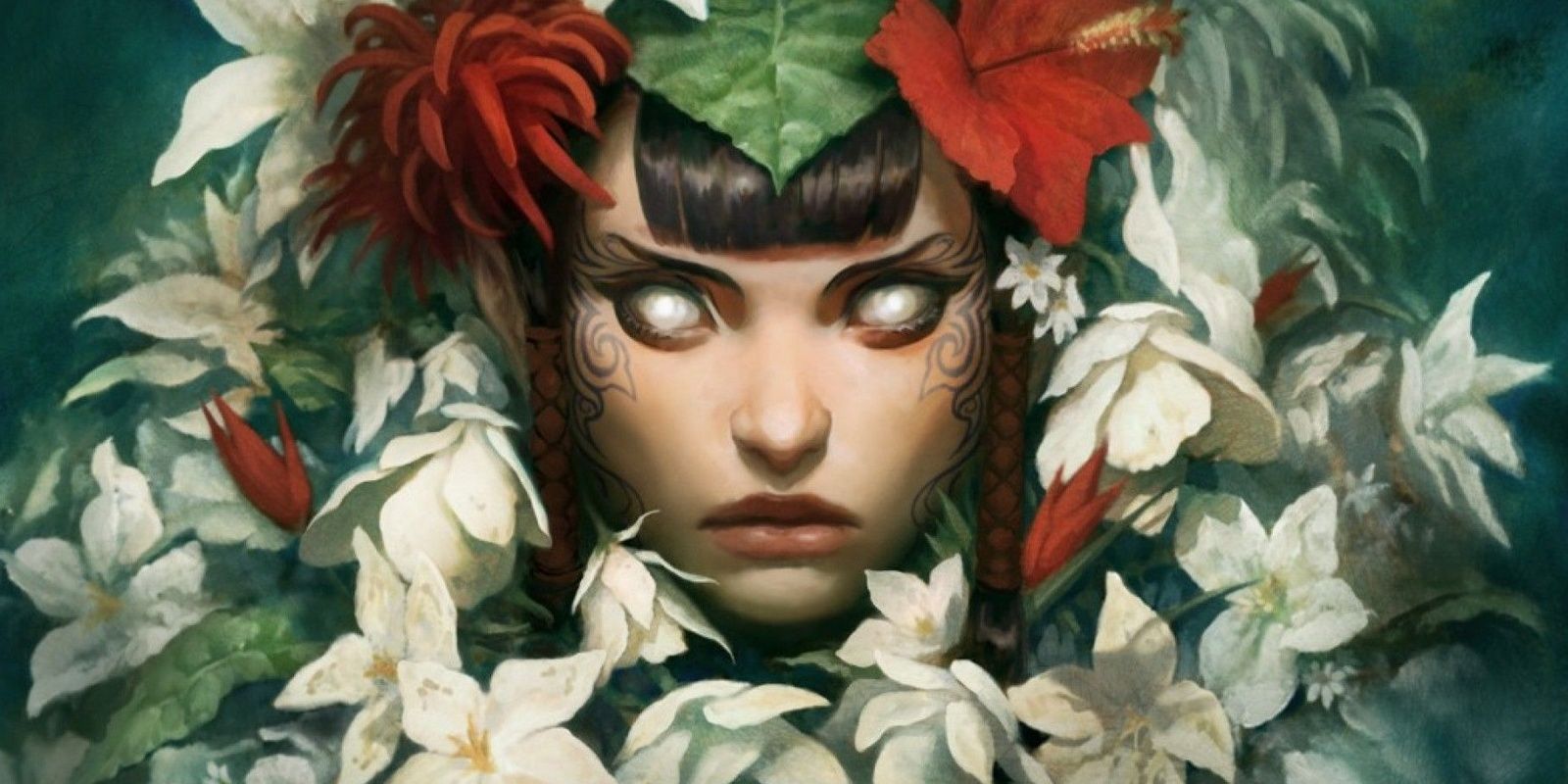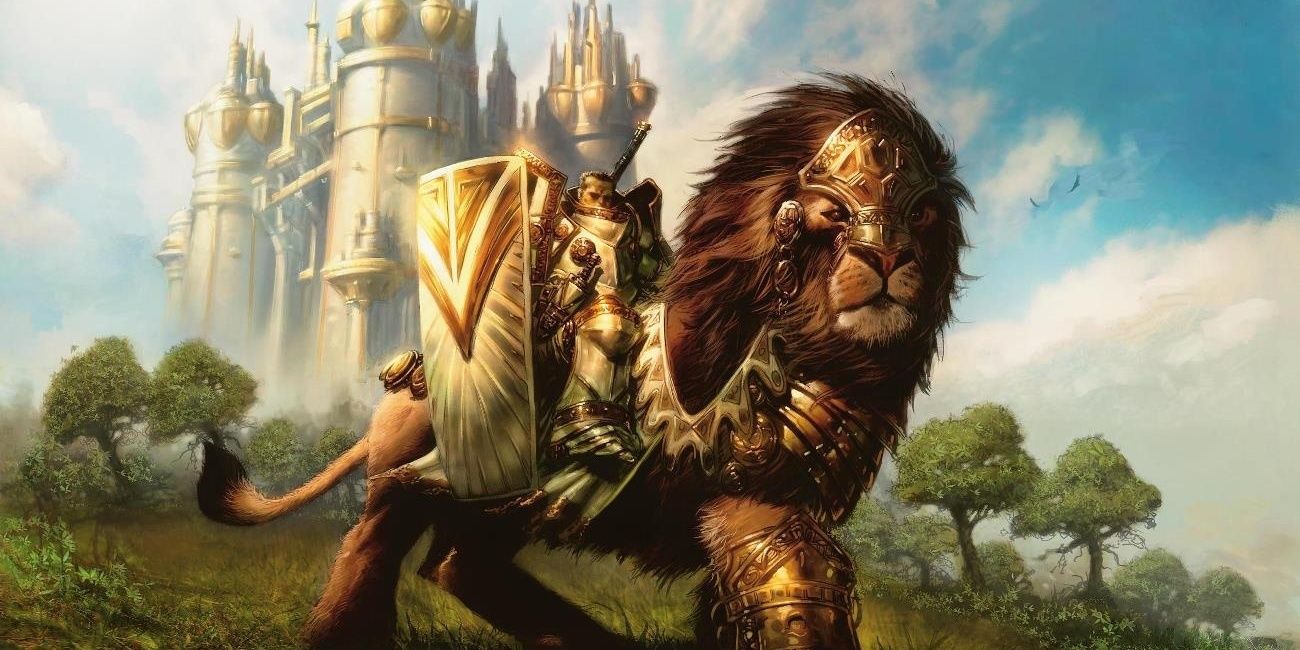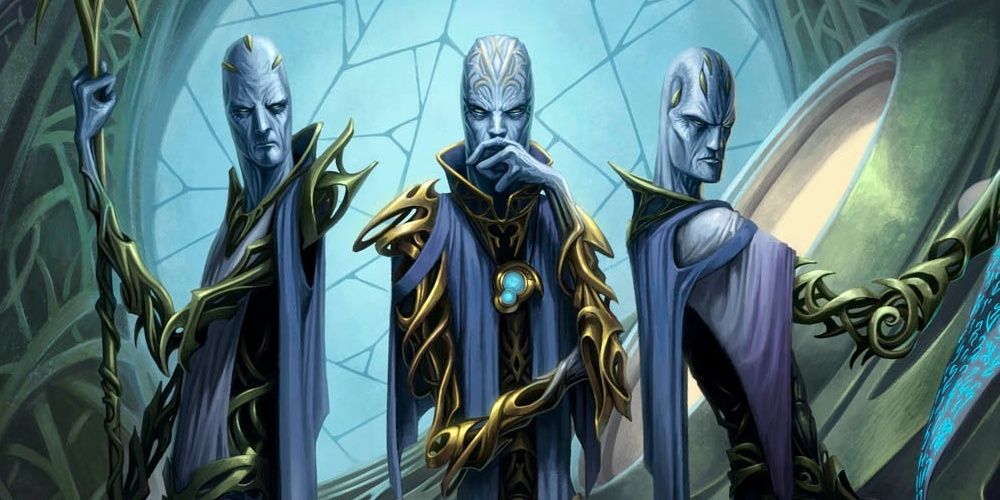While Shards of Alara wasn't the first multicolored block in Magic: The Gathering, it featured some new tricks and tools that earlier sets entirely lacked. By 2008, Wizards of the Coast had covered a lot of ground with the game, from tribal decks to multicolored cards, and 2007's Lorwyn set introduced the Planeswalker card type. But the Shards of Alara block introduced even more nuanced design for multicolored sets, and told a story unlike any before it, and in an unprecedented manner.
One World Becomes Five
In the block's story, a diverse plane known as Alara was split into five shards during a cataclysm, and each shard lacked two allied colors of mana. Thus, Alara's five shards drifted slowly apart and developed their own unique identities, each based on a color and its two allies. Centuries passed, and the five shards became completely distinct from the original Alara and from each other. Bant was a sunlit kingdom of honor and wisdom, Esper was a metal world of arcane secrets and sphinxes, Grixis was a twisted land of undead horrors and madness, Jund was a volcanic jungle of predators and savage warrior clans, and finally, Naya was a lush jungle paradise of elves, leonin and giant beasts that roamed the land.
None of this was an accident, however. The cataclysm was infamous Elder dragon and tyrant Nicol Bolas' idea, and he split the shards only to slam them back together and create a powerful maelstrom of energy. He could feed on that energy to restore his exhausted and time-worn body, and it worked. During the Conflux set, the shards roughly reunited, and during Alara Reborn, they were seamlessly fitted together once again, the individuals shards' unique magic and races blending to a greater degree.
No other block told a story on this scale, or involved such diverse worlds. The Shards of Alara set was five wildly unique worlds in one that planeswalkers were able to freely travel to and from.
All Things Are Gold
"Gold" multicolor refers to cards that have two or more colors and gold frames, as opposed to hybrid or mono-colored cards, and Shards of Alara had many. Each shard showcased its multicolored identity through an incredible number of gold cards, many of which where three-colored. Up until Shards of Alara, nearly all multicolored cards in Magic: The Gathering were just two colors, with the likes of Nicol Bolas or the five Nephilim from Ravnica being the exception. Many one- and two-colored cards also had activated abilities with different colors of mana, such as the Battlemage cycle.
Shards of Alara was the set that introduced the mythic rarity to expansion sets, represented with a reddish-bronze color. Only one in eight booster packs contained a mythic rare card, and until 2019's War of the Spark set, all Planeswalker cards were mythic rare. In addition, Shards of Alara introduced the first multicolored planeswalkers: Ajani Vengeant (Red-White), Sarkhan Vol (Red-Green) and Nicol Bolas, Planeswalker (Blue-Black-Red). Multicolored planeswalkers can do much more than their mono-colored cousins. And it's not just Planeswalker cards; this set introduced colored artifacts as well, all of them based on the Esper shard (White-Blue-Black). Colored artifacts can use abilities and effects of their colors, such as a Black artifact that can be sacrificed to destroy a creature.
The next two sets, Conflux and Alara reborn, showcased multicolored effects like never before. Five-colored cards were extremely rare, but now, Conflux introduced four more: Maelstrom Archangel, Child of Alara, Progenitus, Conflux and Fusion Elemental. A number of other cards have activated abilities that cost the five colors, too. But even that pales in comparison to Alara Reborn, the game's first and (so far) only all-multicolored block. Except lands, every card in this set is gold multicolored, with most being two or three colors. This set also took the unusual step of combining hybrid mana symbols with regular mana symbols on cards, such as in the five "Blade" cards, like Esper Stormblade or Naya Hushblade.
While Shards of Alara didn't pioneer the concept of multicolored sets, even in the modern era (Ravnica came first), it covered new ground and put three-colored cards on the map in a whole new way.



